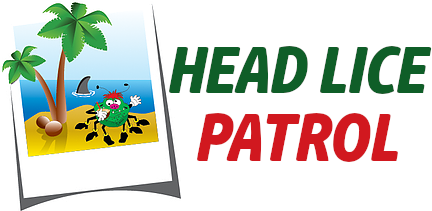Facts, Signs, and Symptoms
Description
The head louse, Pediculus Humanus Capitis, though very small (2mm to 4 mm in length) can be seen by the human eye. Lice live among human hairs, draw blood from the skin (although the amount drawn is almost too little too measure), and lay eggs (nits) on hair shafts, close to the skin surface where the temperature is perfect for incubation. They have tiny claws on their legs that are adapted for feeding and clinging to hair or clothing. Their bites may cause inflammation and itching, and they can become infected. Temporarily, lice can live in clothing, bed linens, combs, brushes, and hats that have come in contact with an infested person. Kids and teens are most prone to catching lice because they are likely to share such personal items and because they are often in close physical contact with other infected children.
Prevention
Although a head lice infestation is not a sign of uncleanness, you can prevent lice by avoiding physical contact with a person who has lice. Not sharing combs, brushes, hats, scarves, ribbons, or other personal items. Examining and treating members of your household whom have had close contact with a person infected with lice. Keeping your child home from school or day care until the morning after treatment for lice. Keep tea tree shampoo and conditioner on hand. Use it when notified of an outbreak. Also apply tea tree oil to the scalp and sleep with overnight.
Incubation
Lice eggs hatch within 1-2 weeks after they are laid, and newly hatched lice must bite within 24 hours of hatching. However, itching doesn’t always start right away. It depends on how sensitive a particular person’s skin is to the lice bites.
Contagiousness
Lice are highly contagious. Although they do not fly in the air or walk on the ground, they can pass from person to person on clothing, linens, combs, brushes, and hats.
When Re-Infestations Happen
Head lice are spreading in almost epidemic proportions. It is now almost as common to catch head lice as to catch a common cold. Once lice are in a community it is almost impossible to completely eradicate them. Re-infestations are very common. You can be re-infested from the same people, different people, movie theaters; any place where stray hairs have fallen onto fabric. Nits attached to fallen hairs will later hatch and then climb up on the next head that occupies that location. Lice can even drop off the head as your treating to escape, only to crawl back on some one the very same day.
Our Best Advice…Conduct Regular Inspections
Teach your children to NEVER touch their head to a friend’s head or try on their jackets, scarves or hats. Make sure to VACUUM or WASH anything that could have a fallen hair on it. An untreated nit can hatch up to 10 days later, so be vigilant. Finally, realize that this is a WAR, not just a few quick battles. Once lice are in your group of family and friends you associate with, it is very easy to get a re-infestation from them. It is very difficult for every family to get every louse and nit on every head. So, inspect frequently to catch re-infestations.
Clean Home and Personal Items
Just about every item that touches the head or shoulders can transmit lice and should be cleaned as follows: All personal head gear (hats, hair ribbons, etc.), scarves, coats, towels, and bed linen should be cleaned by machine washing in hot water and then dried using the hot cycle of a dryer for at least 20 minutes. Clothing, bedspreads, blankets, pillows, or stuffed animals that cannot be washed should be dry cleaned or sealed in a plastic bag for a period of 2 weeks or sprayed with a product specific for that purpose. Soaking in hot water (above 130 degrees Fahrenheit) for 5-10 minutes should clean combs and brushes. Vacuum everywhere. It is recommended that all rooms and furniture used by infested household members be thoroughly vacuumed. Vacuum all carpets, mattresses, upholstered furniture and car seats.





